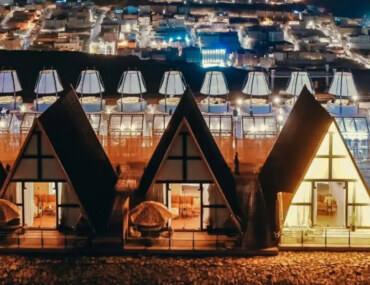Japanese architect Shigeru Ban is known just as much for his humanitarian efforts as for his innovative, contemporary designs. Ban, who was awarded the prestigious Pritzker Prize for modernist architecture last week, has pioneered the use of recyclable materials such as cardboard and paper in disaster relief projects.
In earthquake-ravaged towns as far flung as Christchurch and Chengdu, Ban’s work has helped local communities get back on their feet. The Pritzker Organization chairman and CEO Tom Pritzker said of Ban’s prize: “Innovation is not limited by building type and compassion is not limited by budget. Shigeru has made our world a better place.”
Here are just a handful of inspiring examples of his selfless work.
Cardboard Cathedral: Christchurch, New Zealand
For one of his recent projects, Ban helped rebuild the symbol of Christchurch: the city’s 132-year-old Gothic cathedral that was badly damaged in the 6.3 magnitude earthquake in February 2011. Built using cardboard tubes as columns, beams and walls, the temporary cathedral has capacity for 700 people and can also be used as an event and conference space. The paper tube design – which Ban has incorporated in most of his humanitarian work – is inexpensive, easy to construct, waterproof and fireproof.
Container Temporary Housing: Onagawa, Japan
After the 2011 earthquake and tsunami, Onagawa struggled to construct sufficient temporary accommodation to house survivors. Ban and his team submitted a design to the municipal government for three-storey temporary housing made from shipping containers. The containers were placed in a checkerboard pattern to create a open living space between them. Nine buildings were constructed to house 189 families.
Hualin Temporary Elementary School: Chengdu, China
Sichuan province was hit by a magnitude 8 earthquake in May 2008, effectively destroying the Chengdu district. After much of the Hualin Elementary School was deemed unusable, Ban designed and constructed temporary classrooms made from paper tubes. A team of Japanese and Chinese volunteers worked together to build the classrooms.
Paper Refugee Shelters: Rwanda
This was the project that started it all. Ban’s humanitarian work began in response to the 1994 conflict in Rwanda, which displaced millions of people. Ban proposed paper-tube shelters to the United Nations High Commissioner for Refugees and they hired him as a consultant.





